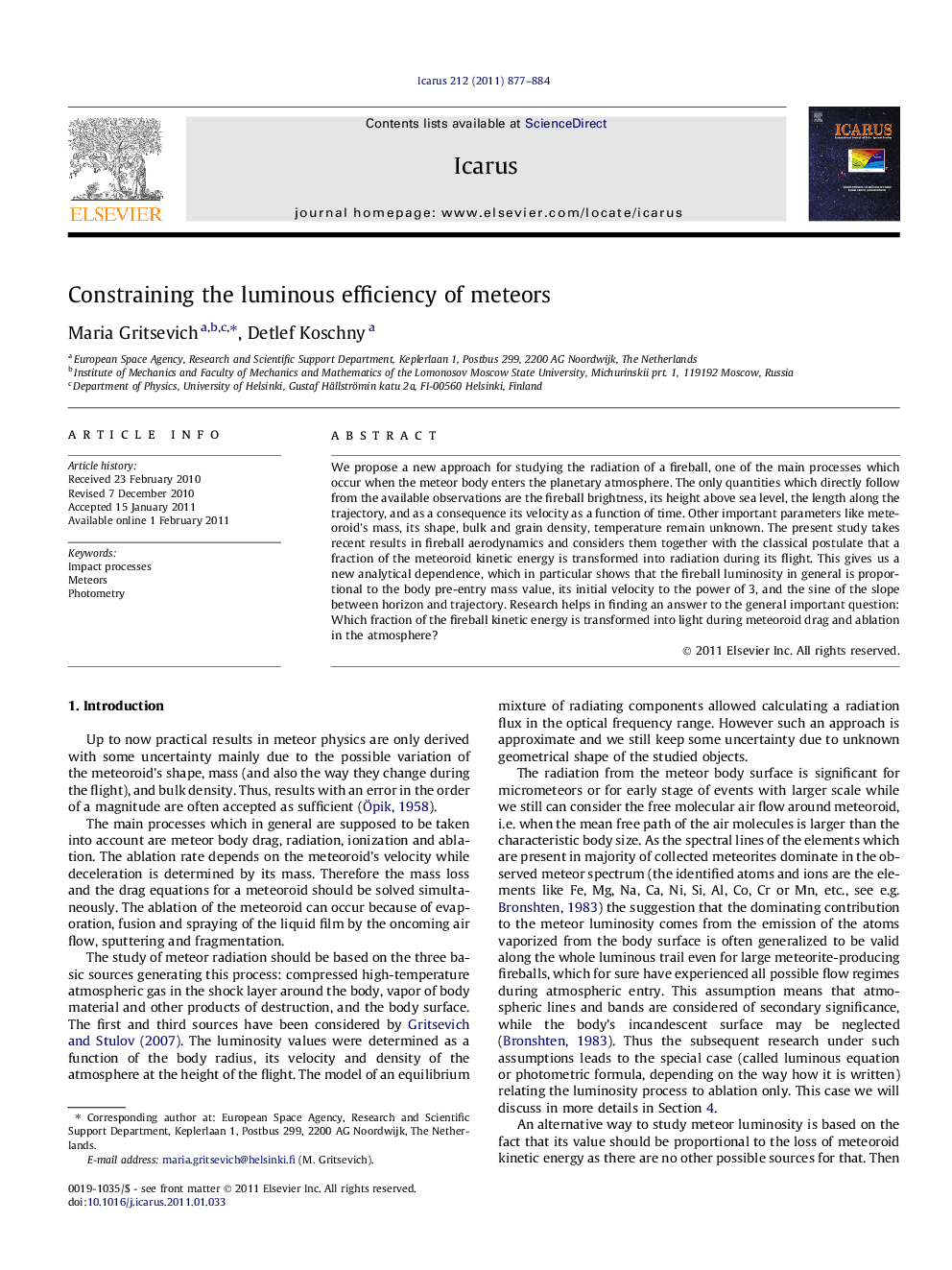| کد مقاله | کد نشریه | سال انتشار | مقاله انگلیسی | نسخه تمام متن |
|---|---|---|---|---|
| 1774609 | 1021169 | 2011 | 8 صفحه PDF | دانلود رایگان |

We propose a new approach for studying the radiation of a fireball, one of the main processes which occur when the meteor body enters the planetary atmosphere. The only quantities which directly follow from the available observations are the fireball brightness, its height above sea level, the length along the trajectory, and as a consequence its velocity as a function of time. Other important parameters like meteoroid’s mass, its shape, bulk and grain density, temperature remain unknown. The present study takes recent results in fireball aerodynamics and considers them together with the classical postulate that a fraction of the meteoroid kinetic energy is transformed into radiation during its flight. This gives us a new analytical dependence, which in particular shows that the fireball luminosity in general is proportional to the body pre-entry mass value, its initial velocity to the power of 3, and the sine of the slope between horizon and trajectory. Research helps in finding an answer to the general important question: Which fraction of the fireball kinetic energy is transformed into light during meteoroid drag and ablation in the atmosphere?
Research highlights
► We adopt a new technique to interpret brightness of a meteor.
► Both changes in meteoroid mass and velocity are considered.
► Meteor luminosity is expressed analytically as a function of its velocity.
► We test methodology on three MORP fireballs.
Journal: Icarus - Volume 212, Issue 2, April 2011, Pages 877–884